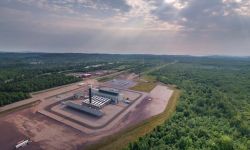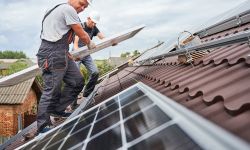What furor over drab Gaylord land says about Michigan’s energy transition
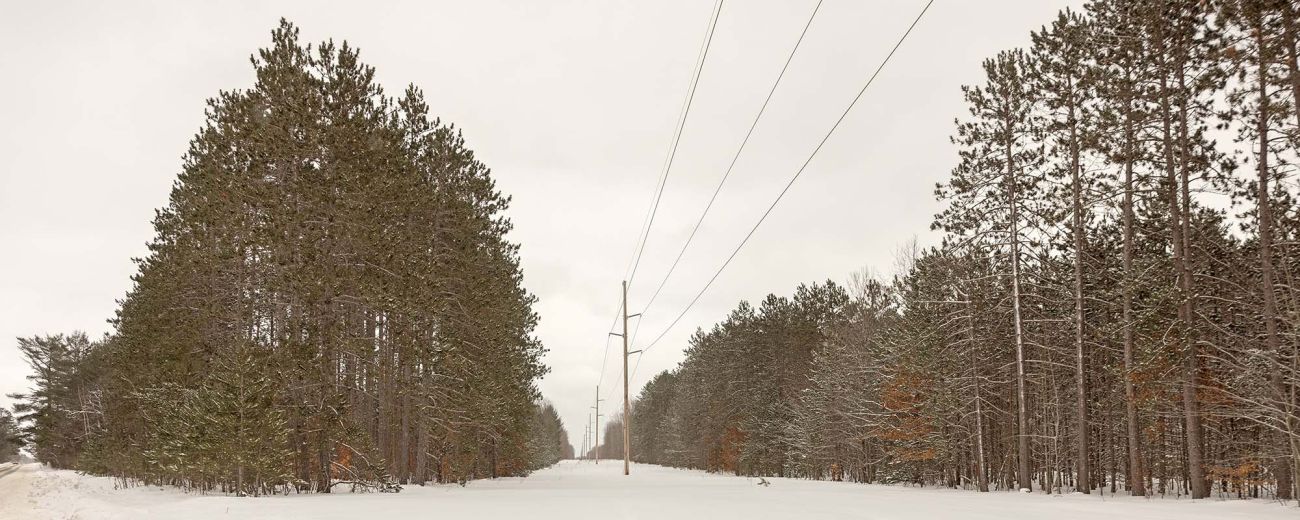
- A humble plot of land in Gaylord has become a lightning rod over clean energy plans
- Michigan needs a lot of open space if it wants to add wind and solar, but many don’t want to live near the projects or see trees cut down
- State officials are pausing new leases amid the controversy, but continuing to consider this one
GAYLORD — For generations, few paid much attention to the unremarkable plots of trees and grasslands on the edge of town.
Over the years, red pines were planted, logged and replanted. Utility transmission lines sprung up, along with oil and gas wells and the occasional human visitor.
So it went for years and years on these humble 420 acres of state-owned land, as Michigan managed the property with sometimes competing missions of providing money from logging and oil and gas extraction, habitat for plants and animals and recreation to the public.
Then in early January, Michigan announced a proposal to lease the land to a solar energy developer.
All hell broke loose.
Republicans opposed to Gov. Gretchen Whitmer’s “green energy agenda” joined neighbors, solar energy skeptics and some environmentalists in blasting the plan, prompting online petitions and a call for mass firings over the prospect of felling trees for solar power.
Misinformation ran rampant, with some falsely claiming the land might be sold rather than leased, or that solar panels might cover a beloved local hiking and skiing trail.
DNR Director Scott Bowen, who authorized the lease proposal, admits he was “surprised by the anger and the vitriol.”

Energy policy experts weren’t.
“There are land-use implications of an energy transition that we haven't really come to terms with,” said Sarah Mills, a University of Michigan researcher who has spent years studying how communities react to renewable energy development. “We haven't grappled with how we're going to do it, and where does it make the most sense?”
The battle over 420 acres reveals a key barrier to Michigan’s energy transition: While solar panels and wind farms emit none of the greenhouse gases and lung-choking pollution caused by fossil fuel power plants, they take up a lot more space. And there is no agreement about where to put them.
Despite a new law that gives state energy regulators the power to approve solar farms despite local opposition, the scenario in Gaylord shows public attitudes still matter a great deal.
While state officials ponder what to do in Gaylord, they’re pausing consideration of additional solar leases while they revisit the agency’s process for vetting proposals and engaging with the public.
“We have to do a better job of explaining what’s motivating us,” said Bowen.
Marginal land or a valuable resource?
The world’s leading climate scientists say society has mere years to transition from fossil fuels and avoid “tipping points” marked by catastrophic warming that threatens life on earth.
Michigan’s biggest utilities have worked toward carbon neutrality for years. In 2023, Democrats in the Michigan Legislature passed a law requiring a statewide transition to 100% clean energy by 2040.
Related:
- Gaylord solar lease plan sparks broad battle over green energy in Michigan
- Amid outcry, solar farm owner says it no longer wants Michigan forest to expand
For now, that effort relies largely on replacing power plants with solar farms. Assuming that doesn’t change, Michigan’s power providers may need to install 209,000 acres-worth of solar panels in the coming 15 years — an area roughly the size of Leelanau County.
Nationally, the estimate is up to 22,000 square miles.
The state is Michigan’s largest single landowner, owning 4.6 million acres or roughly 1/8th of the state. So the DNR has long been involved in conversations about where to put clean energy.
In recent years, the agency has assessed tens of thousands of acres for potential solar farm viability, ruling most of them out over concerns about habitat, recreational access or other concerns.
So far, officials have signed solar leases or lease options on two abandoned industrial sites near Iron Mountain and Grayling, and about 1,050 mostly-forested acres near Roscommon.
When Bowen took over the agency in 2023, he pressed his staff to find more — a directive motivated by climate change and concerns about the department’s financial stability.
With limited general fund dollars devoted to managing Michigan’s forests, parks, fish and wildlife, the DNR’s $534 million budget relies heavily on royalties from oil and gas drilling on state land.
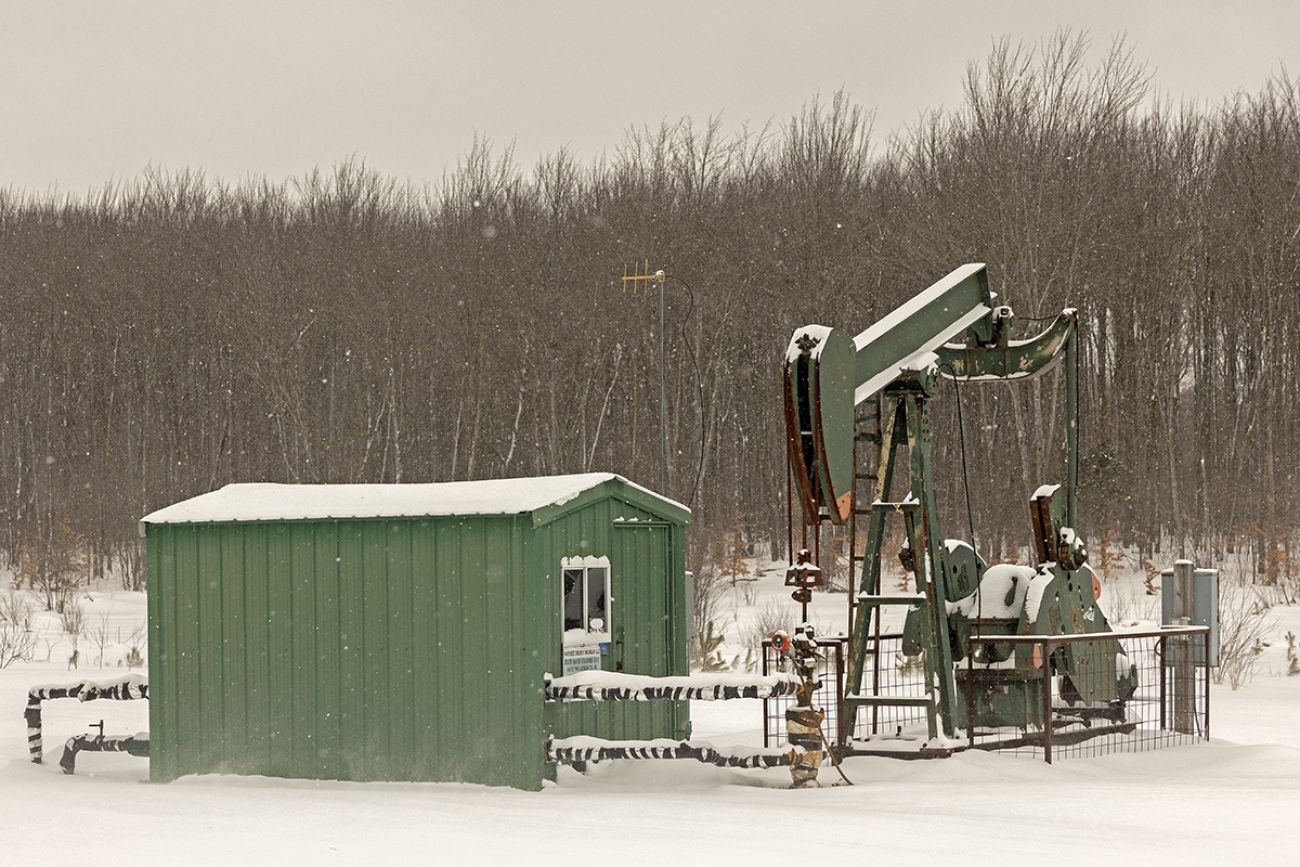
“That’s a depleting resource, and one day it’ll be gone,” Bowen told a Bridge reporter on a recent visit to the Gaylord property. “Plus I believe climate change is real, and solar is part of the solution.”
Over the duration of a 25-year lease, solar arrays can bring in $20,000 or more per acre — several times the potential revenue from logging. In theory, then, a 420-acre array could bring in $8.4 million or more.
By allowing solar panels on some of the agency’s marginal lands, Bowen said, the DNR could generate enough money to buy an equal amount of replacement land and still have money for other priorities.
“We have so many things we need to do,” Bowen said. “Like, we don't have any money for dam removal, and we have more than 200 dams on state owned land that we manage, and eventually all those dams have got to be removed or repaired.”
The Gaylord proposal emerged when RWE Renewables, a company pursuing a 1,000-acre project in town, approached the DNR about leasing adjacent state land to expand the development.
After exploring 1,200 acres, DNR officials narrowed the proposal to 420 acres spread out across several parcels — a mix of open land dotted with gas wells and power lines, red pine plantations, and hardwoods at various stages of regrowth.
Competing values, information vacuum
Some agency staffers criticized the decision, arguing it would be counterproductive to cut down the trees that cover part of the property and replace them with solar panels.
“Clean energy is not green energy if it starts with deforestation,” DNR Forest Stewardship Coordinator Mike Smalligan wrote in documents obtained by MLive.
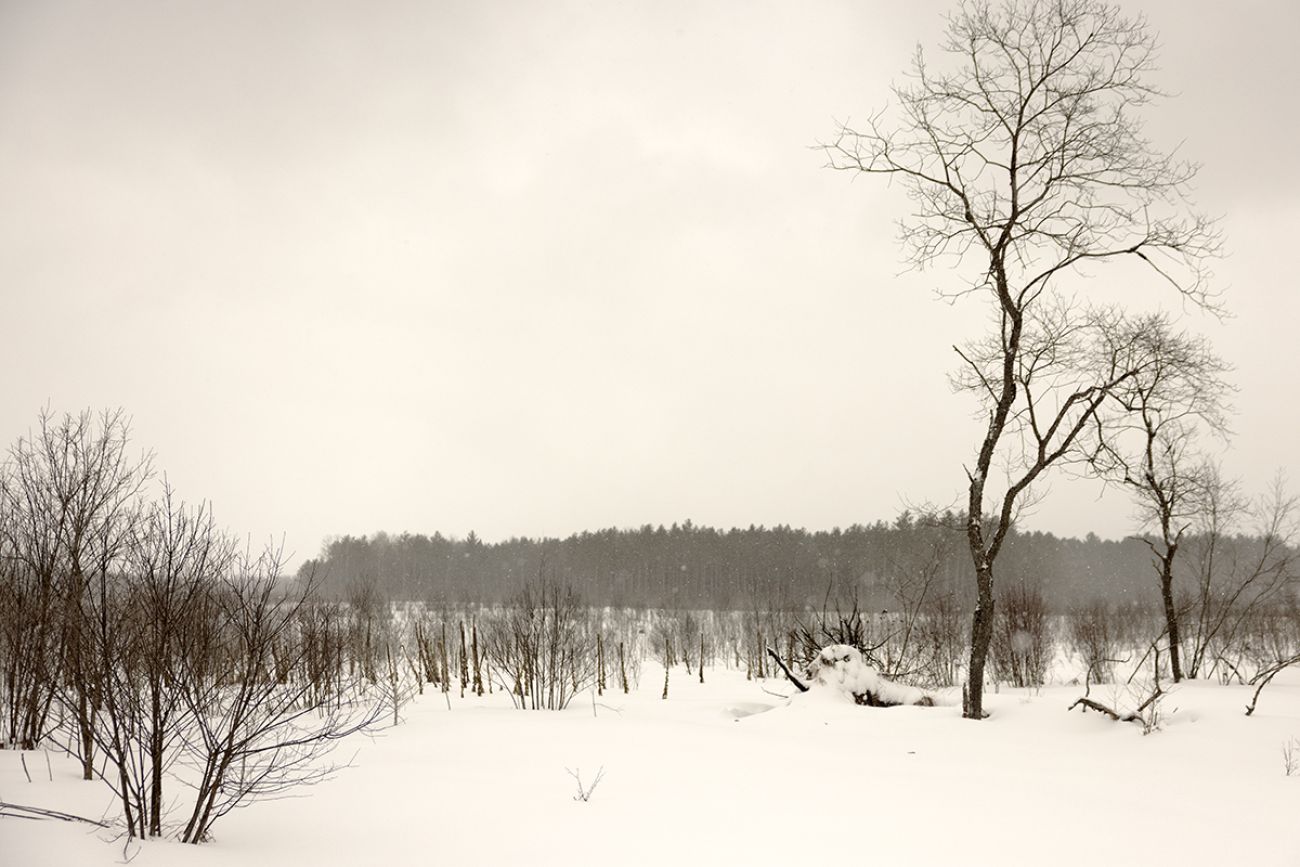
Others believed the lease made climate sense, because much of the land is not forested or contains pine plantations that are destined to be logged.
But as news traveled, neighbors had their own concerns.
Some told Bridge they’re not opposed to solar energy, but feel left out of the conversation about which lands are best-suited for it, and who benefits.
“What do they plan to do with the energy that’s coming off the line?” asked Judy Hofmann, who lives across the road from one of the parcels. “Is it going to supply the people in the area?”

Others expressed disbelief that solar panels could generate sufficient power in the snowy north (research says otherwise), fear that wildlife will be displaced, or concerns about losing public access or the view outside their window.
“They’re ugly,” neighbor Diane Vertican, 71, said of solar panels.
The furor spread south to Roscommon County, where another developer is exploring the possibility of putting solar panels on up to 570 acres of state land abutting a local airport and Interstate 75.
In Lansing, Republican lawmakers vowed to scrutinize all DNR efforts to use public lands for solar energy.
“The curtain is coming down on these terrible ideas and House Republicans aren’t going to stop digging until we uncover every single place the DNR plans to kill wildlife to further the radical green energy agenda,” Rep. Ken Borton, R-Gaylord, said in a statement.
Some environmentalists came to the DNR’s defense.
“We support leasing or selling marginal state land for solar and wind development,” read a statement from the Michigan Environmental Council. “...At first blush, the property in Gaylord appears to be a well-situated site for some level of solar development.”
The group accused anti-solar activists of stoking misinformation about the project in hopes of starting “an anti-solar firestorm.”
Mills, the land use expert from U-M, said the controversy is no surprise.
Wherever a new land use is proposed in a community, there are likely to be objections, she said. And renewable energy, in particular, is deeply contentious — especially when it’s proposed on forest or farmland.
Mills said those tensions were made worse by a lack of public conversation about the tradeoffs involved in deciding where to put renewable energy.
For example, it may be possible to put more solar panels on rooftops or brownfields, but it would cost more and isn’t always technically feasible.
It may be possible to avoid state lands, Mills said, but that would likely put more development pressure on farmland or other properties — another unpopular prospect. And putting it nowhere means continuing to burn fossil fuels for energy — worsening climate change and polluting the air in communities near power plants.
“It's easy for everybody to imagine another place where they think it would be better,” Mills said. “And the reality is it's gotta go somewhere.”
Bowen, the DNR director who will ultimately decide whether to move forward with the Gaylord lease, said he still believes the land is a good candidate for solar energy development.
But before making a decision, he wants to review public comments and hold a public meeting on the project. The DNR has extended the comment period to three months from the usual one month.
“It won’t be an emotional response to an emotional reaction,” he said. “It'll be based on science, based on economics and based on what's right for this piece of property.”
Michigan Environment Watch
Michigan Environment Watch examines how public policy, industry, and other factors interact with the state’s trove of natural resources.
- See full coverage
- Subscribe
- Share tips and questions with Bridge environment reporter Kelly House
Michigan Environment Watch is made possible by generous financial support from:
Our generous Environment Watch underwriters encourage Bridge Michigan readers to also support civic journalism by becoming Bridge members. Please consider joining today.
See what new members are saying about why they donated to Bridge Michigan:
- “In order for this information to be accurate and unbiased it must be underwritten by its readers, not by special interests.” - Larry S.
- “Not many other media sources report on the topics Bridge does.” - Susan B.
- “Your journalism is outstanding and rare these days.” - Mark S.
If you want to ensure the future of nonpartisan, nonprofit Michigan journalism, please become a member today. You, too, will be asked why you donated and maybe we'll feature your quote next time!


